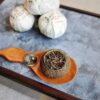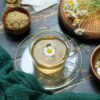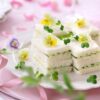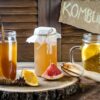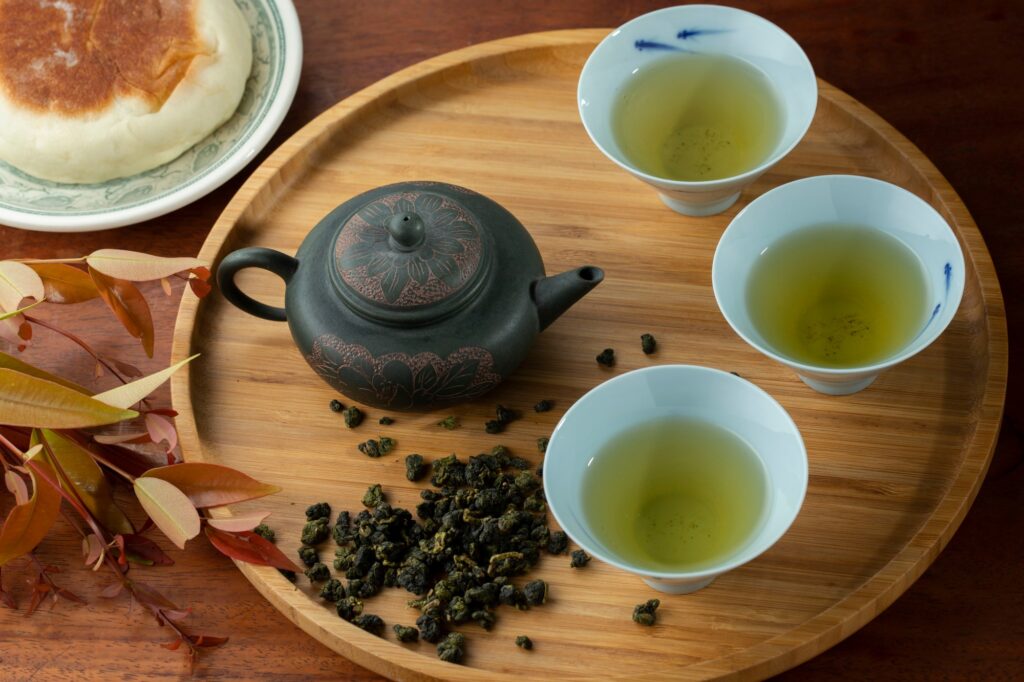
Nestled between the bold assertiveness of black tea and the delicate subtlety of green tea lies a treasure trove of flavor – oolong tea. This partially oxidized tea captivates tea enthusiasts with its remarkable complexity and rich cultural heritage.
A Symphony of Flavors
Oolong tea is a sensory adventure, offering a spectrum of tastes that dance on the palate. From light and floral to rich and roasted, each sip tells a story of craftsmanship and terroir. Picture the gentle sweetness of orchids in a high mountain Jin Xuan, or the deep, woodsy notes of a well-roasted Wuyi Rock oolong. The flavor profile of oolong is as diverse as it is captivating, with notes that can include:
- Honey-like sweetness
- Creamy, buttery textures
- Fruity undertones reminiscent of peach or apricot
- Roasted, nutty flavors
- Floral bouquets ranging from lilac to osmanthus
The Art of Production
The magic of oolong lies in its production process, a delicate dance of oxidation that requires the skilled hand of a tea master. After plucking, the leaves are withered under the sun, then shaken or tumbled to bruise the edges. This initiates oxidation, which is halted at precisely the right moment – anywhere from 8% to 80% – to achieve the desired flavor profile.
The leaves are then shaped, often rolled into tight balls or long twists, and fired to stop oxidation and seal in the flavors. This intricate process results in teas that can range from the light, jade green of a Baozhong to the deep amber of a Da Hong Pao.
A Cultural Icon
In the tea-drinking cultures of China and Taiwan, oolong holds a place of honor. It’s not just a beverage, but a centerpiece for social gatherings, a subject of artistic expression, and a meditation aid. The famous Gongfu tea ceremony, with its precise rituals and specialized equipment, was developed to showcase the nuanced flavors of oolong teas.
The Perfect Brew
To truly appreciate oolong, proper brewing is essential. Here’s a simple guide:
- Use water just off the boil (190-200°F)
- Steep for 1-5 minutes, depending on the specific tea
- Use about 1 teaspoon of leaves per cup of water
- Consider multiple infusions to experience how the flavor evolves
Health in Every Sip
Beyond its exquisite taste, oolong offers a wealth of health benefits. Rich in polyphenols and antioxidants, it may support:
- Weight management by boosting metabolism
- Heart health through improved cholesterol levels
- Cognitive function and mental alertness
- Overall well-being with its anti-inflammatory properties
The Terroir of Tradition
The world’s finest oolongs hail from specific regions renowned for their unique growing conditions and centuries-old tea-making traditions. In China, the Fujian province stands as the cradle of oolong, with the famed Wuyi Mountains producing the legendary Rock oolongs. Across the strait, Taiwan has made a name for itself with high mountain oolongs that capture the essence of the misty peaks where they’re grown.
These teas are more than just beverages; they’re liquid geography, each sip transporting you to the lush mountainsides and ancient tea gardens where they originate.
Embark on your oolong journey today and discover why tea enthusiasts around the world are captivated by this extraordinary tea. From its complex flavors to its rich cultural significance, oolong offers a world of exploration for the curious palate.

